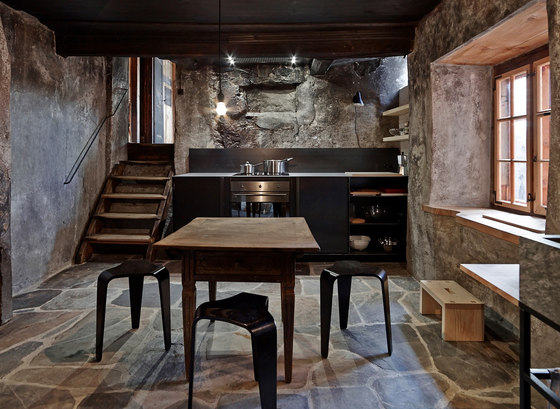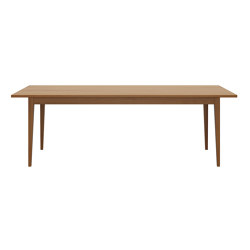
Photographe : Zeljko Gataric

Photographe : Zeljko Gataric

Photographe : Zeljko Gataric
History & Information
The present appearance of the Türalihus goes back to the last extension of 1775. The tower was raised and the interior decorated with magnificent panelling and noble stoves. On the second floor, which together with the third forms the upper apartment, there is a stately, south-facing living room. It is equipped with a two-tone panel and a cube oven. At the back of the house there is another paneled parlour with rich paintings, which now serves as a dining room. On the south side of the attic there is a living room and an adjoining chamber, which now serve as bedrooms. In the small parlour next to the kitchen, a bathroom was installed, which invites to stay.
Renovation
The Ilanz architects Capaul & Blumenthal were responsible for the renovation. The original structure and unique character of the house had to be preserved: worn stone steps, sooty areas in the old kitchen, painted panelling and stoves in the rooms still bear witness to the time of its construction. The restoration work followed a strictly conservative approach and can be described as "courage to fragment". The modern fittings in kitchens and bathrooms and the contemporary furnishings prove how well old and new can be combined.
After removal of a crumbling rough broom plaster from the 20th century, fragments of five different versions from the period between 1465 and 1775 emerged, which impressively illustrate the complex building history of the house. Maintaining the existing coexistence of different, staggered versions became the guiding principle of the facade restoration carried out between 2010 and 2012.
Source: Ferien im Baudenkmal Foundation; www.magnificasa.ch
Stiftung Ferien im Baudenkmal
Zürich
Architects:
Capaul & Blumenthal Ilanz
Designteam:
Selected Interiors Zürich

Photographe : Zeljko Gataric








